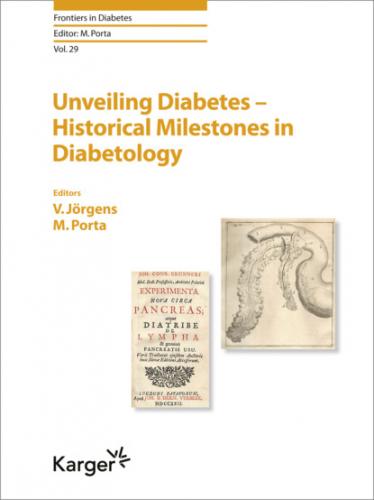He recommended thirst-quenching remedies, such as laxatives, fruit cataplasms applied to the loins, milk, and fruit squeezes. Aretaeus lived in Rome and Alexandria but in his time was not as famous as Galenus. His works, written in the Ionic dialect, remained unknown for centuries and were rediscovered in 1552 by Junius Paulus Crassus (Giunio Paolo Grassi) of Padua, who translated them into Latin and had them printed in Venice [8].
Claudius Galenus of Pergamon (129–207 AD) said that he only encountered 2 cases of diabetes. In De Crisibus, he theorized on the inability of the body to alter the liquids ingested and the consequent weakness of the kidneys in holding them back. He defined the massive, continuous emission of urine as “urine diarrhea” (“ùderos”) and “orinae profluvium” [9].
The Middle Ages
This was not a period of new concepts, at least as far as diabetes is concerned. With regard to treatment, Aëtius of Amida (ca. 502–575 AD), a Byzantine Greek physician and medical writer, introduced opium to the therapy of polyuria [10]. Alexander of Tralles (ca. 525–605), most eminent among ancient physicians, wrote an original treatise on urine and diseased urination, for which he recommended food copious and agreeable, with rose wine, golden wine of Attica, rose honey, and hydromel. More drastically, Paulus of Aegina (ca. 625– 690), best known as the father of early medical treatises for his Medical Compendium in seven books, prescribed bloodletting [1–5].
Despite its many erudite representatives, also Islamic medicine brought few contributions to diabetology. Abu Bakr Muhammad Ibn Zakariya Al Razi (865–925 AD) did discuss diabetes in the more than 200 books, including a 25-volume encyclopedia, which he wrote. Abu Ali el Hussein Ibn Abdallah Ibn Sina (Avicenna; 980–1,037 AD), the most famous physician of the Persian world, wrote the “Canon” (al-Qanun-fi, t-Tibb), a vast encyclopedia that became the principal medical textbook in Italian and French medical schools. The section on urinalysis gives a complete account of diabetes (which he called “aldulab,” after the wheel carrying water buckets for washerwomen) with its symptoms and the frequent association with gangrene. Avicenna wrote in the Canon that diabetes results from a strong inner heat that would best benefit from chilling and moisturizing with fruit and ointments (Fig. 4). He recommended staying in a fresh and humid environment, and taking ice-cold baths to calm thirst, cool down the kidneys, and strengthen loin muscles. Sweating, vomitus, and avoiding strain on the dorsum were also useful. Bloodletting was beneficial only at disease onset. Nutritional advice included milk and barley flour. Medication contemplated poppy seeds [11].
Fig. 4. Frontispiece and page from Avicennae Principis et Philosophi Sapientissimi. Venice, 1564. The Museum of Diabetes, Turin. www.museodeldiabete.it. Reprinted with kind permission.
Abd Al Latif Al Baghdadi (1162–1231) composed a monograph on diabetes, but his description of a “tendency of urine to smell sweet” had been mistranslated to “sweet taste of urine.” Rabbi Moses Maimonides (Abu Imran Musa Ben Maimun Ibn Abd Allah; 1135–1204 AD), regarded as the greatest among Jewish physicians of old, published a collection of almost 1,500 aphorisms. The analysis of urine and diabetes are discussed in depth, with the notation that the “strong thirst” was rare in his native Spain but quite frequent in his adopted land of Egypt, caused by the soapy waters of the Nile [1, 2, 5].
The Schola Medica Salernitana attracted Latin, Greek, Jewish, and Arab physicians from about 800 AD through to 1811, when it was closed by order of Napoleon (Fig. 5). As such, it represented the most universalistic concentration of medical knowledge possible in old times. Its testament was the monumental Regimen (or Flos) Sanitatis. In diabetes, according to the Regimen, the kidneys are desiccated and overheated by such bad habits as immoderate coitus, running, jumping, and excess work, and attract too quickly from the liver the fluids absorbed by the intestine, causing unquenchable thirst and unrestrained urination. Among its adepts, Constantine the African and Petrus Clericus (11th century), Johannes Platearius the Young and Matthaeus Platearius (12th century) treated excess urination with purges, electuaries of dragon’s blood (an Indian palm), or provoking abundant perspiration by sitting the patient on a perforated chair placed upon a brazier [12–14].
Fig. 5. Colophon, “La Scuola Salernitana Dilucidata.” Venice, 1733. The Museum of Diabetes, Turin. www.museodeldiabete.it. Reprinted with kind permission.
Monastic medicine was importantly represented by Hildegard von Bingen (1098-1179), abbess of Ruprechtsberg, near Bingen, on the Rhine, arguably the first female diabetologist in history. Hildegard wrote as many as 14 books of medical matter, including a treatise of Causes and Cures of 47 ailments, and included many pages on diabetes which, like her contemporaries, she considered a disease of the kidneys and bladder. A number of dietary directions were included: avoiding nuts, aromas and – a first – sweets. Regrettably, liquids were also restricted [1, 5].
The centuries that followed brought little evolution in diabetes. The Venetian Luigi Cornaro (1467–1566) suggested strict dietary control in his De la Vita Sobria, and Vittore Trincavelli (1496–1568), a professor at Padua University, reported on a case in which the patient’s urines were tasted by relatives who found them sweet. Ambroise Paré (1509–1590; Fig. 6) [15], surgeon to four kings of France, mostly parroted Aretaeus’s description and current remedies of his time “excellents pour ceux qui jettent l’urine involontairement,” with the original contribution of diabetes being caused by “trop grand travail immoderé” – modern stress?
Fig. 6. Above: frontispiece and portrait of Ambroise Paré, from Opera Ambrosii Parei. Paris, 1582. Below: a page from “De Diabete,” from Opera Ambrosii Parei. The Museum of Diabetes, Turin. www.museodeldiabete.it. Reprinted with kind permission.
Sebastiano Pissini (1580–1655), patrician and doctor from Lucca, in his monograph De Diabete Dissertatio followed the tradition of Galen and, like all his contemporary colleagues, tormented the unfortunate patients with all sorts of remedies: bloodletting, purgatives, vomitives, astringents
